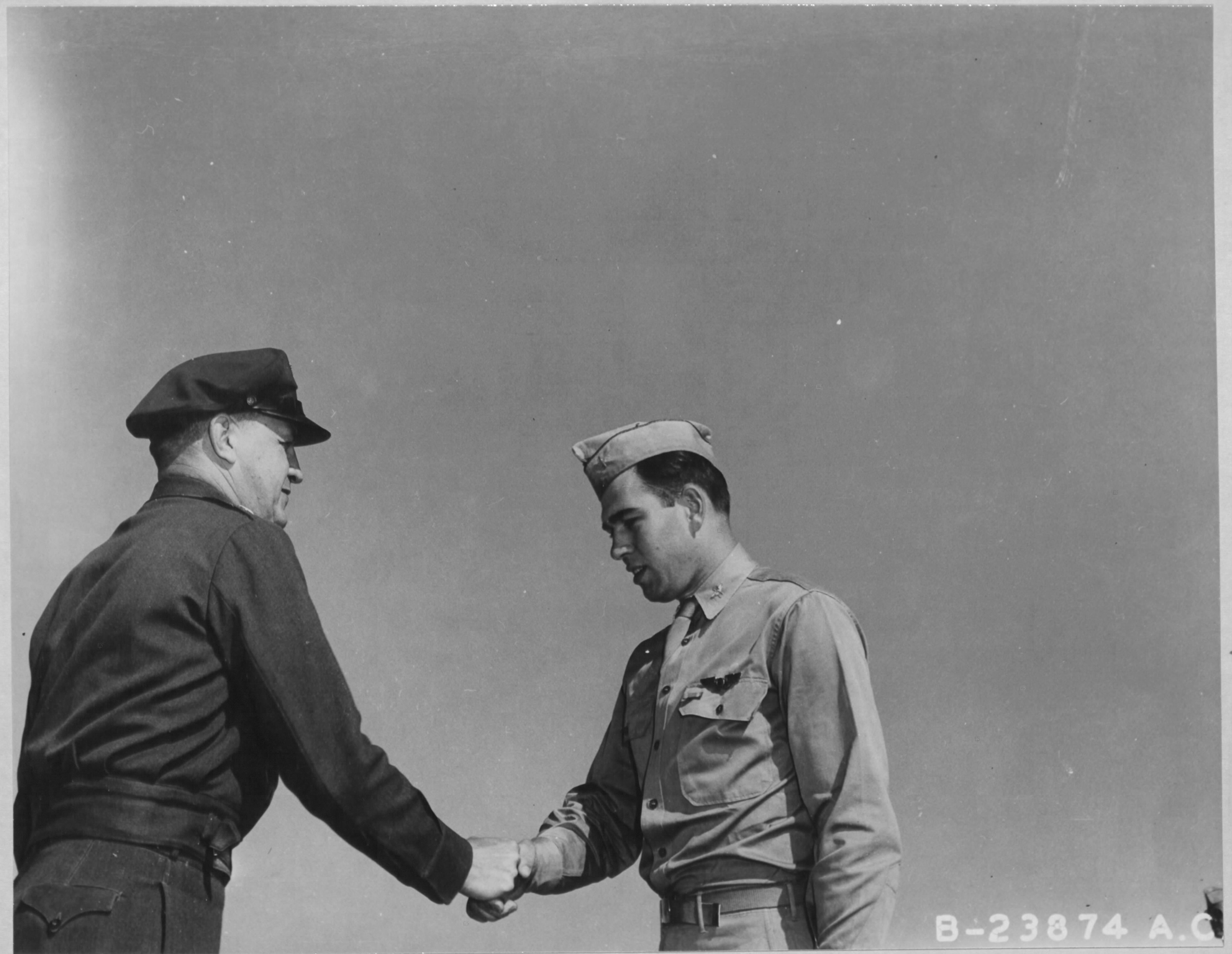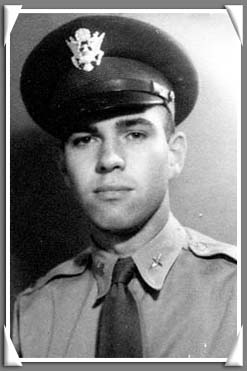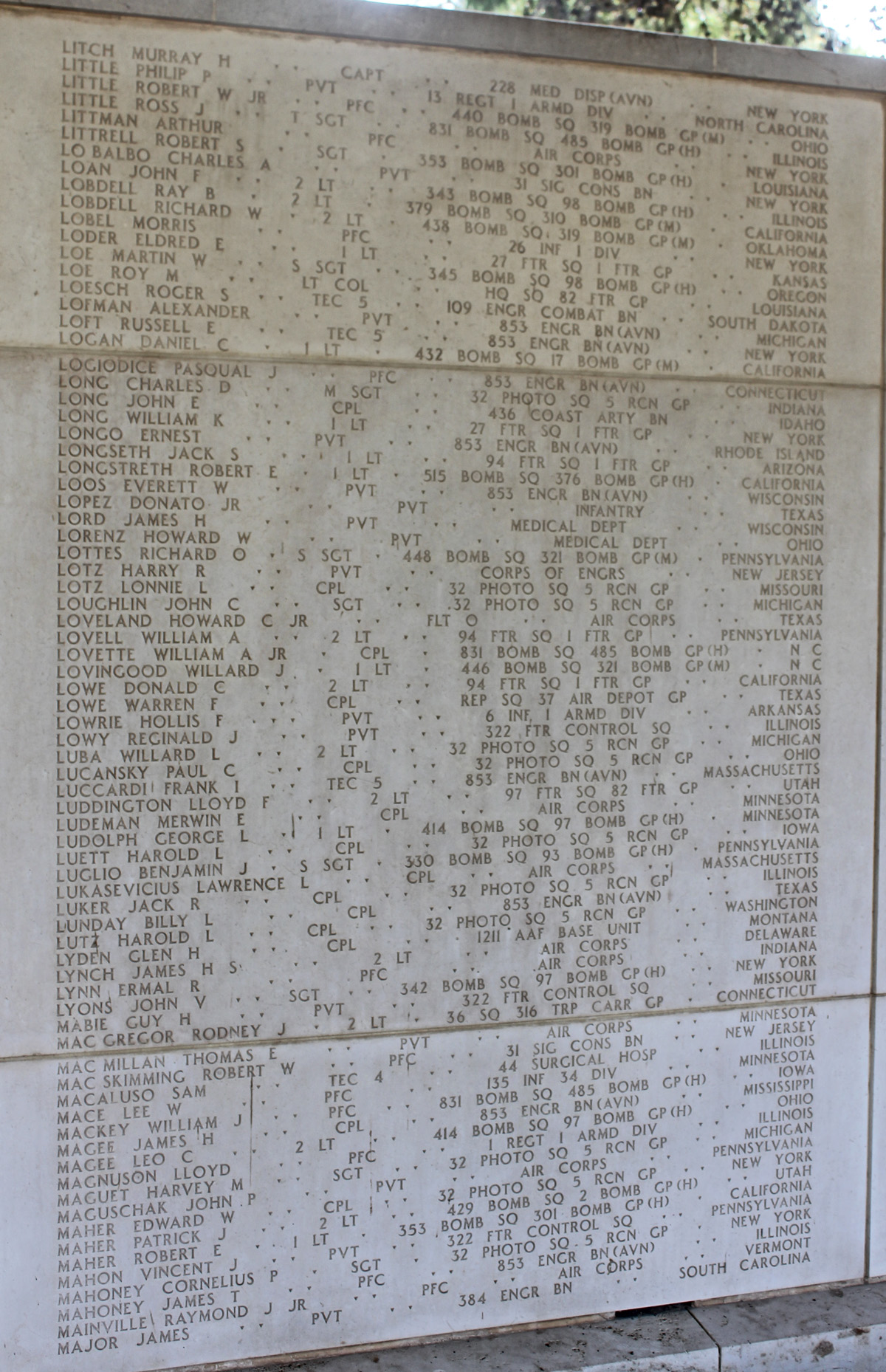Robert Earl Longstreth was born on 13 May 1919 in Nevada, Vernon County, Missouri, son of Bruce R. Longstreth and Florence DeGood.
As Bruce R. Longstreth's son, born in Missouri Robert E. Longstreth (age 7/12), was enumerated, in the 1920 Federal Census, on 13 Jan 1920 in 709 East Allison Street, Nevada, Vernon County, Missouri. Robert was 1 1/2 years old at the death of his mother, Florence (DeGood) Longstreth on 25 Nov 1920.
Robert was 9 years old at the death of his father, Bruce R. Longstreth, on 2 Mar 1928. His father died as the result of a locomotive accident at the Missouri Pacific Railroad yards.
As Elsie Longstreth's stepson, born in Missouri Robert Earl Longstreth (age 11) attended school during past year, was enumerated, in the 1930 Federal Census, on 17 Apr 1930 in 706 South Adams, Nevada, Vernon County, Missouri. Photocopy of document is attached.
Robert began military service on 10 Nov 1941 Los Angeles, Los Angeles County, California, as an Aviation Cadet in the Air Corps, Army Serial #19062250. He was born in Missouri in 1918. He had 7 years of education, including 3 years of college. He was single without dependents.
First Lieutenant Robert Earl Longstreth was a navigator on a B-24D Liberator with the U.S. Army Air Forces, 515th Bomber Squadron, 376th Bomber Group Heavy. His service number was 0-438238. He entered the Army Air Force from California. Robert joined the 376th Bomb Group early in 1942 when it was known as the Halverson Detachment (HALPRO).
The so-called Halverson Detachment, named for its commander, Col. Harry A. Halverson, consisted of twenty-three B-24D Liberator heavy bombers with hand-picked crews. HALPRO, the detachment's code name, had been designed and trained to bomb Tokyo from bases in China, but by the time it was ready to deploy Japanese control of the Burma Road had made it highly improbable that the detachment could be logistically supported in China. General George C. Marshall, Chief of Staff of the Army, therefore sought and received permission from Roosevelt to divert the detachment to Egypt for a surprise raid on oil refineries in Ploesti, Rumania. The idea behind the Ploesti raid was to upset German preparations for their expected summer offensive against the Soviet Union.
Lt. Robert Earl Longstreth wrote on 17 Aug 1942 to his Uncle Glenn from Palestine. On 6 Sep 1942 from Palestine, he wrote to his uncle about war in general. In his letter of 29 Jan 1943 to his uncle he wrote about the first American raid on Naples and its coverage in the 21 Dec 1942 issue of Life Magazine.
1st Lt Robert E. Longstreth completed missions from July 1942 - April 30, 1943, including support missions of the British forces in Egypt and Libya, and U S Army Air Force missions to Tobruk, Benghasi, Sfax, Tripoli, Bizerte, Crete, Catania, Palermo, Toronto, Fogia, Messina, Naples, Bari and others. He died on the mission to Messina, Sicily on the lead airplane, 1st assault on 30 Apr 1943. This was to be his next to last mission. Military awards were the Silver Star, Distinguished Flying Cross and Air Medal.
First Lieutenant Robert Earl Longstreth was declared missing in action or buried at sea while serving in the U. S. Army Air Corp as a navigator and crew member of the 'Wittle Wed Wabbit," a B-24D, in the Mediterranean Theater of Operations during World War II on 30 Apr 1943. He is memorialized at the Tablets of the Missing at North Africa American Cemetery, Carthage.
Robert Earl Longstreth was born on 13 May 1919 in Nevada, Vernon County, Missouri, son of Bruce R. Longstreth and Florence DeGood.
As Bruce R. Longstreth's son, born in Missouri Robert E. Longstreth (age 7/12), was enumerated, in the 1920 Federal Census, on 13 Jan 1920 in 709 East Allison Street, Nevada, Vernon County, Missouri. Robert was 1 1/2 years old at the death of his mother, Florence (DeGood) Longstreth on 25 Nov 1920.
Robert was 9 years old at the death of his father, Bruce R. Longstreth, on 2 Mar 1928. His father died as the result of a locomotive accident at the Missouri Pacific Railroad yards.
As Elsie Longstreth's stepson, born in Missouri Robert Earl Longstreth (age 11) attended school during past year, was enumerated, in the 1930 Federal Census, on 17 Apr 1930 in 706 South Adams, Nevada, Vernon County, Missouri. Photocopy of document is attached.
Robert began military service on 10 Nov 1941 Los Angeles, Los Angeles County, California, as an Aviation Cadet in the Air Corps, Army Serial #19062250. He was born in Missouri in 1918. He had 7 years of education, including 3 years of college. He was single without dependents.
First Lieutenant Robert Earl Longstreth was a navigator on a B-24D Liberator with the U.S. Army Air Forces, 515th Bomber Squadron, 376th Bomber Group Heavy. His service number was 0-438238. He entered the Army Air Force from California. Robert joined the 376th Bomb Group early in 1942 when it was known as the Halverson Detachment (HALPRO).
The so-called Halverson Detachment, named for its commander, Col. Harry A. Halverson, consisted of twenty-three B-24D Liberator heavy bombers with hand-picked crews. HALPRO, the detachment's code name, had been designed and trained to bomb Tokyo from bases in China, but by the time it was ready to deploy Japanese control of the Burma Road had made it highly improbable that the detachment could be logistically supported in China. General George C. Marshall, Chief of Staff of the Army, therefore sought and received permission from Roosevelt to divert the detachment to Egypt for a surprise raid on oil refineries in Ploesti, Rumania. The idea behind the Ploesti raid was to upset German preparations for their expected summer offensive against the Soviet Union.
Lt. Robert Earl Longstreth wrote on 17 Aug 1942 to his Uncle Glenn from Palestine. On 6 Sep 1942 from Palestine, he wrote to his uncle about war in general. In his letter of 29 Jan 1943 to his uncle he wrote about the first American raid on Naples and its coverage in the 21 Dec 1942 issue of Life Magazine.
1st Lt Robert E. Longstreth completed missions from July 1942 - April 30, 1943, including support missions of the British forces in Egypt and Libya, and U S Army Air Force missions to Tobruk, Benghasi, Sfax, Tripoli, Bizerte, Crete, Catania, Palermo, Toronto, Fogia, Messina, Naples, Bari and others. He died on the mission to Messina, Sicily on the lead airplane, 1st assault on 30 Apr 1943. This was to be his next to last mission. Military awards were the Silver Star, Distinguished Flying Cross and Air Medal.
First Lieutenant Robert Earl Longstreth was declared missing in action or buried at sea while serving in the U. S. Army Air Corp as a navigator and crew member of the 'Wittle Wed Wabbit," a B-24D, in the Mediterranean Theater of Operations during World War II on 30 Apr 1943. He is memorialized at the Tablets of the Missing at North Africa American Cemetery, Carthage.
Gravesite Details
Entered the service from California.
Family Members
Sponsored by Ancestry
Advertisement
Advertisement






